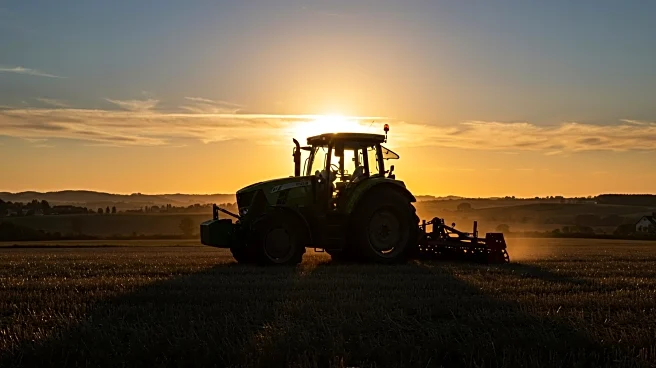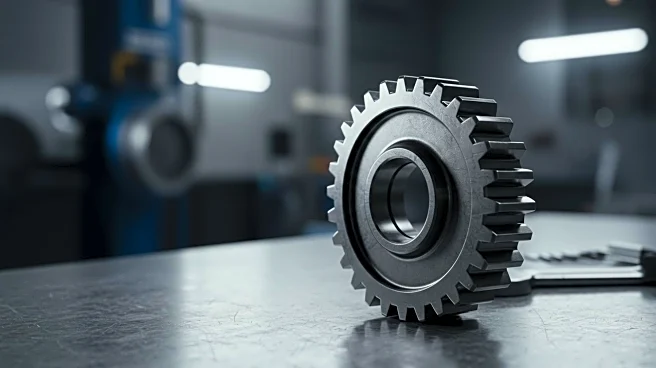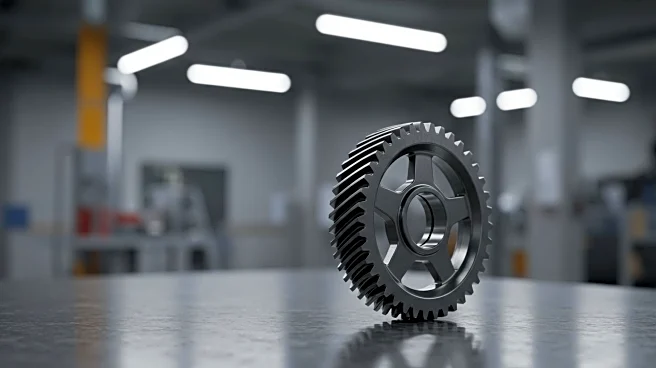What's Happening?
Deere & Company has announced its financial results for the third quarter ending July 27, 2025, reporting a net income of $1.289 billion, or $4.75 per share. This marks a decrease from the previous year's third quarter net income of $1.734 billion, or $6.29 per share. The company's worldwide net sales and revenues also saw a decline, dropping 9 percent to $12.018 billion for the quarter. For the first nine months of 2025, net income attributable to Deere & Company was $3.962 billion, compared to $5.855 billion for the same period last year. John May, chairman and CEO, highlighted the company's proactive inventory management and adaptation to market shifts as key strategies during these challenging times.
Why It's Important?
The financial results reflect the broader challenges facing the agricultural equipment industry, including high levels of used equipment and fluctuating market demand. Deere & Company's ability to manage inventory and align production with retail demand is crucial for maintaining market stability. The company's focus on advanced technologies like See & Spray and Harvest Settings Automation indicates a strategic shift towards innovation to enhance productivity and address industry challenges. These developments are significant for stakeholders, including customers and dealers, as they navigate economic uncertainties and evolving market conditions.
What's Next?
Deere & Company forecasts its net income for fiscal 2025 to be between $4.75 billion and $5.25 billion. The company plans to continue leveraging advanced technologies to improve customer productivity and address industry challenges. Stakeholders can expect ongoing efforts to manage inventory levels and adapt to market shifts. The company's strategies will likely influence its competitive position and ability to meet customer expectations in the coming months.
Beyond the Headlines
The company's financial performance and strategic initiatives may have broader implications for the agricultural sector, particularly in terms of technological adoption and market dynamics. The focus on precision technology solutions could drive long-term shifts in farming practices and equipment utilization, impacting the industry's future landscape.











